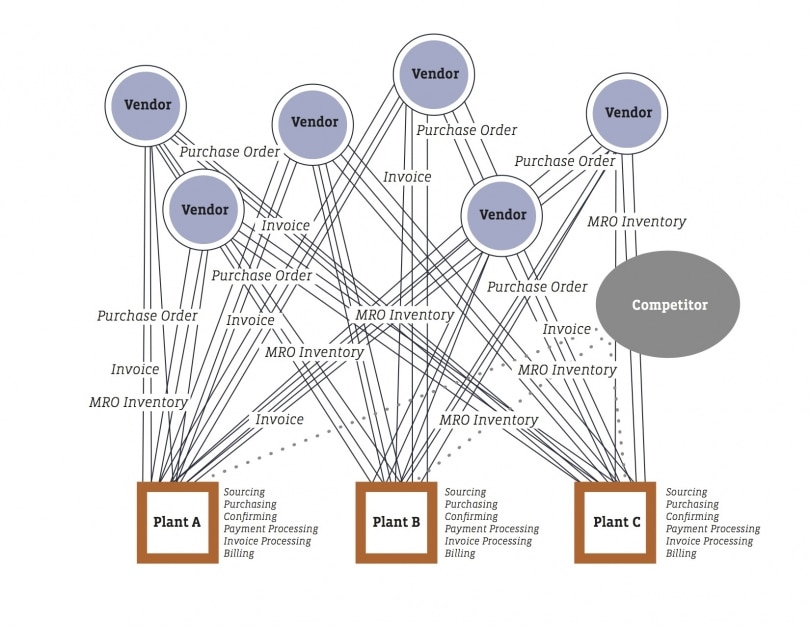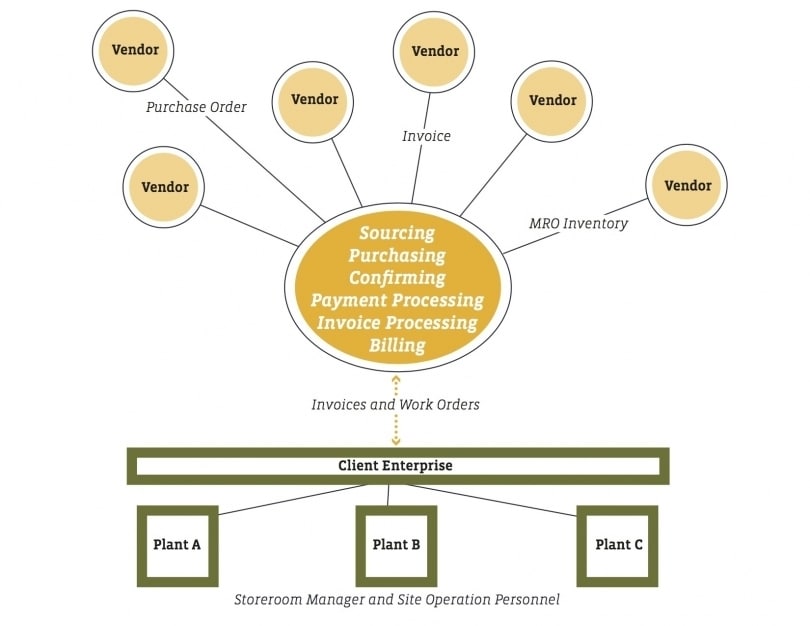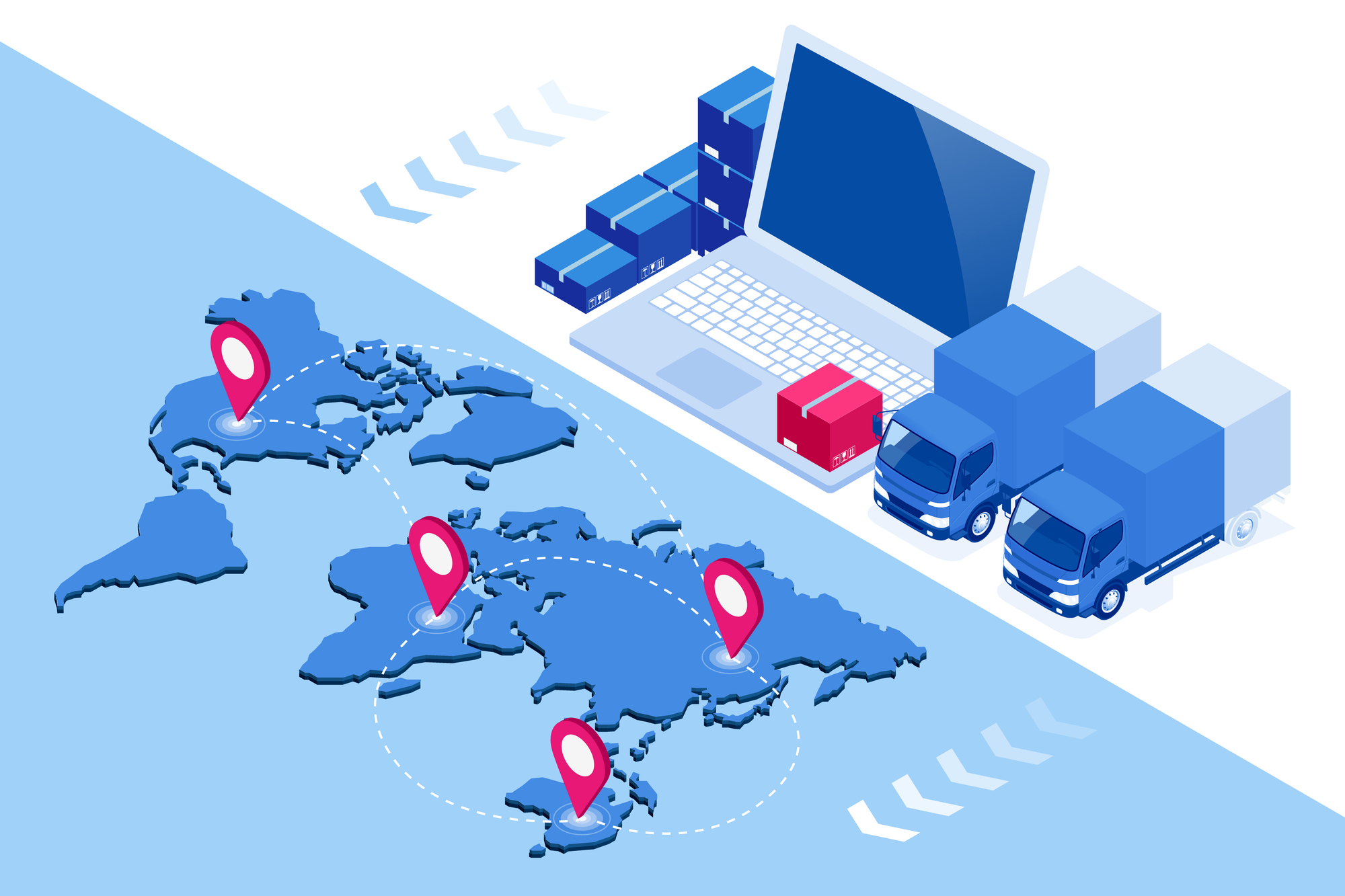- There are several common business models for purchasing in the marketplace – decentralized, center-led and centralized.
Decentralized Model

Click Image for Larger Version
A decentralized model puts buyers at every site, plant or facility. While this may feel like an effective model in terms of fulfilling client demand, it creates a barrier between the sites and corporate, reducing visibility and driving an environment wherein field buyers possess a very broad knowledge base. Further, a decentralized model brings high levels of complexity to strategic sourcing initiatives and can impede compliance to those activities.
Center-Led Model
A center-led model places some resources with the client, while establishing a pool of resources in a shared services “center”. This model can minimize some of the challenges for strategic sourcing initiatives that exist within a decentralized model. However, this model can have challenges with resource efficiency and knowledge sharing amongst buyers.
Centralized Model

Click Image for Larger Version
A centralized buying model creates the opportunity to leverage other buyers as needs arise (leveraging the team’s expertise to create value), enhances support of business continuity and leads to efficient resource planning. It enables closer working relationships with strategic sourcing, supporting growth of deep category expertise, greater visibility to strategic initiatives and enhanced compliance with strategies.
SDI has a centralized buying model. Being centralized lets SDI be more responsive, to handle demand for MRO and indirect supply based on production schedules and seasonal peaks. Additionally, SDI has 24/7 on-call buyers to handle emergency purchasing needs to further ensure business continuity.
SDI buyers research parts thoroughly, leveraging reliability engineers and site managers before ever issuing a PO. With tools provided by our Strategic Sourcing team, buyers ensure that items are purchased from the best suppliers for the best value.
Centralization directly translates into speed and focus, which allows SDI to convert requisitions to purchase orders in 24 hours and priority requests in just 2 hours. Business continuity, deep category expertise, and the ability to constantly leverage SDI’s enterprise-wide MRO purchasing power in the marketplace are all the ways we connect our clients’ MRO supply chain.
Learn more about how centralized buying is part of a more connected MRO supply chain.




